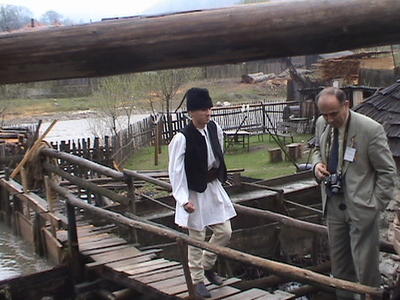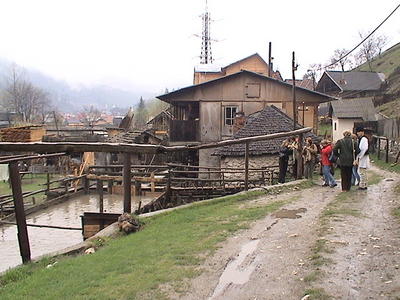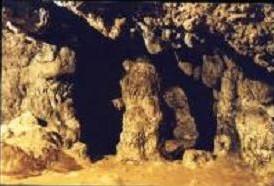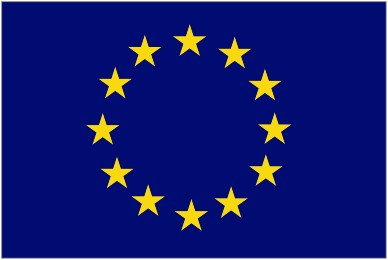The experience done thanks to the Comenius project “The Blue Planet” has been educational and formative, enriching both the teachers and the students of each participating school, at a cultural and social level, creating an occasion of cooperation and growth in a European perspective.
The European School Partners involved in the experience are:
Cordinating school:
“Istituto di Istruzione Superiore “Ugo Mursia” Carini- Italia
European school partners:
“Satilaskolan” Satila, Vastra Gotaland - Sweden
“Grupul Scolar Forestier” Rucar - Romania
“8° Eniaio Lykeio Ioanninon” Ioannina, Epirus- Greece
Transnational mobility
Project meeting in Ioannina, Greece
Project meeting in Rucar, Romania
The project meeting in Greece occurred on 18th, 19th and 20th October 2004.
It included an informative-theoretical-practical approach and a Naturalistic-Archaeological section, with lectures on the following themes: “General principles of the water management” and “Management of the drinkable water” by the municipality of Ioannina”. There was a presentation and a study field of the environmental problems of the Lake Pamvotis of Ioannina by a biologist from the Institution for the Lake Pamvotis, specially the problem of eutrofication and the difficulties to solve it. There was also an information section about the water resources of the Konitsa territory and the Zagori villages, especially Papingo village, which was combined with a visit in the wild landscape of this area. As concerns the practical section, experiments on the physical-chemical methods of measurement of the water cleanliness of the Voidomatis River have been carried out by the participants and moreover they visited the local Water Bottling Company of Zagori.
The naturalistic itinerary has included: a visit of the island of the lake Pamvotis and the Museum of the Modern History of Ali Pasha, the visit to the environmental Centre of Konitsa and the Voidomatis River, and finally a visit to Papingo Village and the WWF Museum there.
The Archaeological itinerary included: visits to the ancient Nikopolis and its Roman Aqueduct and the Nekromanteion of Ephyra with the Oracle of the Dead on the River Acheron, with information about the ancient Greek myths of the underworld.
The meeting focalised the attention of the Municipal authority, of the local TV and press and of local institutions, with the participation of the administrators of Education. Moreover it has arisen the attention and the cooperation by the Institution for the Lake Pamvotis and the Technical association of Greece (Epirus Department) of the Municipality of Ioannina and the donator Anagnostopoulos Foundation in Papingo.
The participants acquired information about the aspects of local life and food and culture, thus creating a more personal link among teachers and students, who have always had a central role in the project meeting activities.
The project meeting in Rucar occurred on April 18th, 19th, 20th ,
It included lectures on the National Park Piatra Craiului, its history, goals and water managment, by an environment engineer; a presentation on Local development and fresh water management”, by the mayor of Rucar.
There was also an information section concerning the importance of water for the local activities such as :the Trout Nursery of Dambovicioara and the Watermill at Rucar.
The power of water was underlined during the water itinerary, including the visit to the Hydropower Station of Pecineagu/Clabucet, the Dambovicioara gorges, the Hydropower Station and the dam of Vidraru and finally the water cleaning entreprise”Apa Brasov”.
During the meeting, the project participants had the opportunity to disccover the water symbols in some of the Romanian myths, legends or literary works thanks to the visits to the Cave of Dambovicioara,the Monastery of Curtea de Arges,the old city of Brasov, or the folk evening, show and dances, performed by the Romanian students.
Of course the students had a relevant role in the activites as well as the local community, with the participation of local administrators and the other local schools.
LOCAL ACTIVITIES
Didactic development of the project theme in the different school subjects and integration in the curriculum in each participating school.
Researches on the scientific and literary aspects concerning the theme, with text analysis of literary passages and study of the ancient myths and symbols of water to be carried out also in the course of next year and enriched with the myths and legends collected by the Greek and the Sweden students
Implementation of the ITC and of communication on line with the development of the Web Magazine, the virtual class and the Web Group and Community, especially promoted by the Greek Partners.
Socialization of the material produced during the meetings: brochures, maps, paper and photographic material.
Workshops group-work on the theme, between teachers and students of different classes to widen the classical knowledge and popular tradition.
Visits to places of particular naturalistic relevance relating to the project theme, with the students’ involvement to motivate them; in Italy the students visited the “ Lavatoio “ of Cefalù, famous also for the Norman Cathedral and its golden mosaics and the city of Castelbuono, one of the most important centres in the Park of the Madonie.
Commemoration of the Tsunami victims and symposium on the disasters caused by water, including also a collection of material of the scientific aspects of the Tsunami
Material produced both jointly and separately
A collection of CDs, prepared by the students in each school on the theme and shared during the meetings among the partners
A linguistic dictionary on water, a sort of glossary including the most recurrent words connected with water, prepared during the meeting in Rucar and completed on line to be enriched next year
A collection of proverbs and paradoxes in the four languages of the partners and the English version
A video presenting the most relevant activities of the meeting, produced by the Greek partner
Panels with pictures and drawings related to the project theme
Sculptures in the Swedish school
Impact of the project
On methodology
Motivation to work in group and to cooperate
Motivation to use the English language as a real means of communication
Intercultural vision of a theme of mutual interest
Desire to meet and know new school experiences and European partners
Consolidation of the use of ITC
Interdisciplinary approach to the school subjects
On the Local community
Interest for the school activities
Integration of the school to the territory
Motivation to understand the necessity to preserve and respect the environment
Social engagement of the local community
Dissemination of the material
The dissemination of the material has been done at a local and a wider level:
Collaboration among the partners
As distribution of work and a mutual cooperation are two essential elements in the partnership, each partner has contributed as much as possible to reach the final objectives, helping according to one’s abilities and capabilities. The activities have given the opportunity to exchange material and methodological suggestions, indispensable in our educational role. We insist on the necessity to involve the students and to motivate them to be more cooperative, and besides we want to encourage them to widen the subject and to use the TIC and the English language to communicate. It would be also advisable to increase the mobility of the students in the project meetings to permit them to know different social and cultural contexts and to feel a deeper European spirit.
Evaluation of the results
Evaluative Techniques
Periodical Project Meetings
Round table with discussions and debates on the project management in each school, to carry out with students and teachers;
Tests to check the students’ awareness, motivation, knowledge…..on the theme;
Involvement of as many students, teachers and local exponents as possible;
A constant interaction between the theme of the project and the school curriculum and activities, in a multidisciplinary perspective;
A periodical account of the activities by the partners;
CONCLUSION
The results of the activities carried out in the course of this second year are satisfying, both at a didactic level and as concerns the cooperation among the partners. An interesting bulk of material has been produced and disseminated, moreover there has been a fair distribution of the role among the schools and the main obstacles concerning communication on line are improving.
For the future managment of the project all the partners insisted on the importance to involve the students on more practical activities: drawings and researches, collection of material in the foreign language and so on.
The Romanian and the Italian schools suggested to enrich the collection of texts on water-symbols in the partners’ culture (literature, music,religion,legends) and to continue working both on scientific and literary topics.The Greek and Sweden texts will be added next year, as the partners are still working on water symbols.This collection will be made by the Italian school as an end product of the project. Another activities to implement in the course of the future year is the dictionary with the most used words connected with water,in English and the languages of the four partners.The dictionary will be drafted by the Romanian team as an end product, too.
We are firmly convinced that the project has had an impact not only at a school level, on methodology and cultural aspects, but also in the local community life: administrators, politicians, the students’ families have been involved in the project meetings, thus creating a moment of aggregation and socialisation among different school realities and different countries.
It’s worth to underline the active role that the students have played both in Greece and in Romania during the meetings, as the project is a moment in the students’ growth.
In conclusion, the experience has been productive and fruitful as a life and teaching experience. Therefore, we intend to strengthen and intensify our school and social engagement through further lectures, workshops and school activities to be carried out in the course of the following year and to intensify our cooperation and friendship.
Our aim is to encourage our students’ civil and human growth, in the attempt to relate the school to the local community and to a wider European perspective.






















